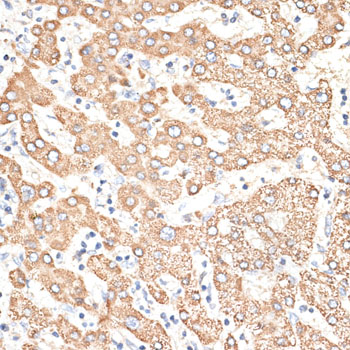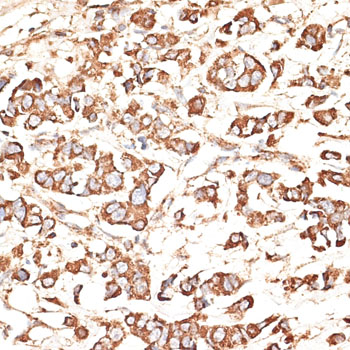KIR3DS1 Polyclonal Antibody
For reference only. Please follow the manual included in your kit for instructions.
Catalog Number
RD85419A
Product Name
KIR3DS1 Polyclonal Antibody
Catalog Number
RD85419A
Purification Method
Affinity purification
Isotype
IgG
Host
Rabbit
Background
Killer cell immunoglobulin-like receptors (KIRs) are transmembrane glycoproteins expressed by natural killer cells and subsets of T cells. The KIR genes are polymorphic and highly homologous and they are found in a cluster on chromosome 19q13.4 within the 1 Mb leukocyte receptor complex (LRC). The gene content of the KIR gene cluster varies among haplotypes, although several 'framework' genes are found in all haplotypes (KIR3DL3, KIR3DP1, KIR3DL4, KIR3DL2). The KIR proteins are classified by the number of extracellular immunoglobulin domains (2D or 3D) and by whether they have a long (L) or short (S) cytoplasmic domain. KIR proteins with the long cytoplasmic domain transduce inhibitory signals upon ligand binding via an immune tyrosine-based inhibitory motif (ITIM), while KIR proteins with the short cytoplasmic domain lack the ITIM motif and instead associate with the TYRO protein tyrosine kinase binding protein to transduce activating signals. The ligands for several KIR proteins are subsets of HLA class I molecules; thus, KIR proteins are thought to play an important role in regulation of the immune response. Alternatively spliced transcript variants encoding different isoforms have been found for this gene.
Immunogen Information
Immunogen
Recombinant fusion protein of human KIR3DS1 (NP_001077008.1).
Gene ID
3813
Swissprot
Q14943
Synonyms
KIR3DS1CD158E2KIR-123FMKIR-G1NKAT-10NKAT10
Applications
Reactivity
Human,Mouse,Rat
Tested Applications
IHC
Conjugation
Unconjugated
Dilution
IHC 1:50-1:200
Concentration
1 mg/mL
Storage Buffer
PBS with 0.02% sodium azide, 50% glycerol, pH7.3
Storage Instructions
Store at -20°C. Avoid freeze / thaw cycles.

